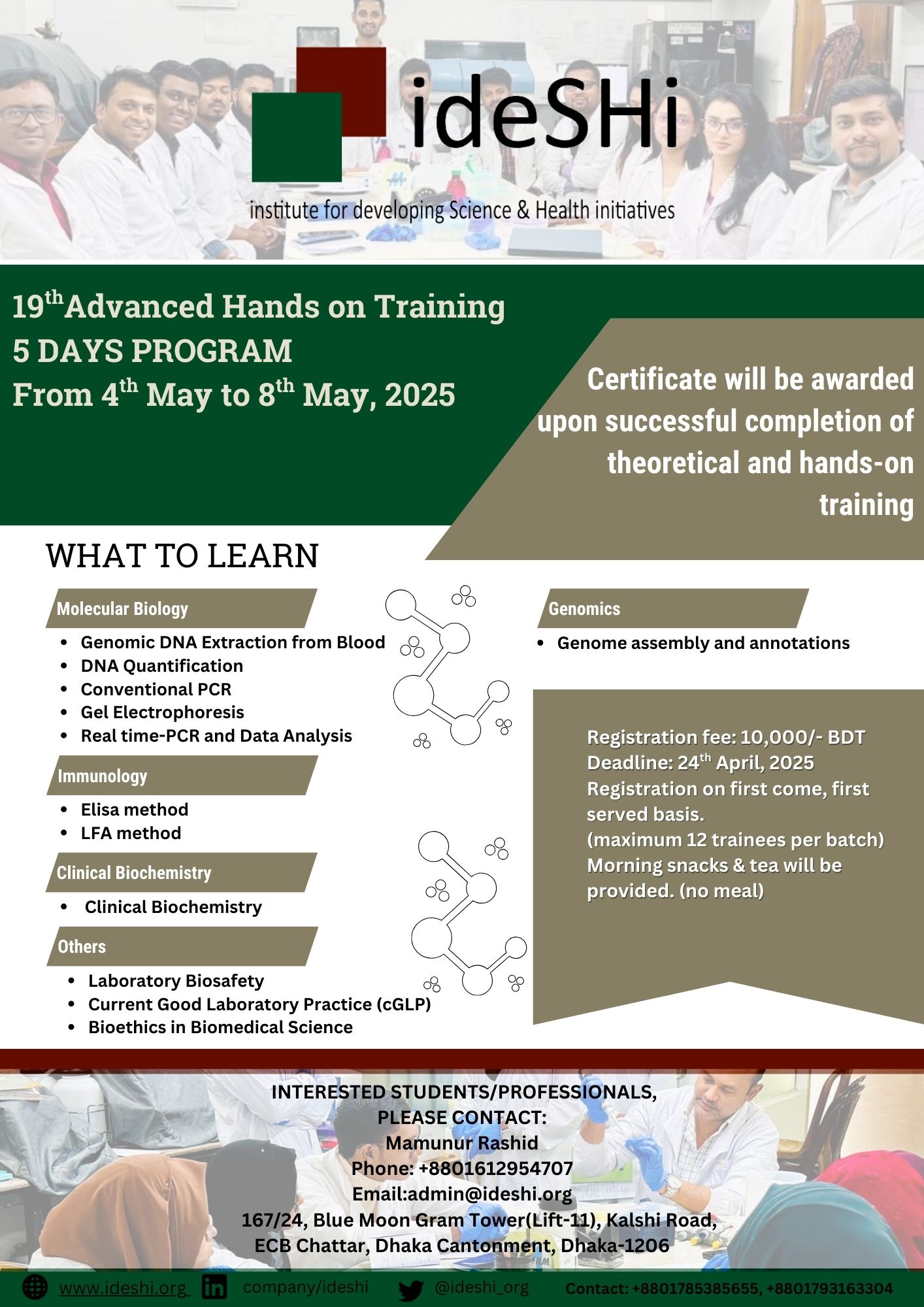Recently,The World Academy of Sciences (TWAS) awarded ideSHi a research grant for studying colistin resistance in Bangladesh. The emergence and rapid global outreach of bacterial mobile elements-mediated colistin resistance gene (mcr-1 & mcr-2) in Enterobacterial species isolated from human and various meat samples, has raised serious concern. The indiscriminate use of colistin in poultry, dairy, livestock and fish farms is considered as the major risk factor for spreading of resistance gene. Although colistinis widely used veterinary medicine in Bangladesh, no study on colistin resistance has been conducted till date.
The increasing incidence of antimicrobial resistance worldwide and a stagnancy development of novel drugs present a major threat to the treatment of infections. Colistin is widely and increasingly used as an antimicrobial agent of last resort for treating infections caused by multi-resistant Gram-negative bacteria. The emergence of plasmid-mediated colistin resistance has become a great challenge to global public health, raising the possibility that dissemination of the colistin resistance gene is underestimated and diversified. The indiscriminate use of colistin in agriculture is considered as the major risk factor of colistin resistance and their dissemination. Identification of the mcr gene(s) mostly from livestock, i.e. 20% among farm animals compared with 1% among humans in China, is a strong indicator against veterinary use of colistin. Bangladesh is a country with diverse agricultural practices where colistin is widely used in poultry, livestock, dairy and fish farms. No strict obligations are followed here regarding use of antibiotics in agriculture. Although within a few months after first report of plasmid-mediated colistin resistance, it was shown that the mcr gene(s) had spread in several countries and four continents; and was isolated from various types of meat, river water and the environment as well as from infected patients.
The outcomes of this study will provide an overview about the prevalence of colistin resistance along with bacterial organisms carrying colistin resistance genes in Bangladesh. It will also be possible to know whether other antibiotic resistance genes co-exist with mcr-1 or mcr-2 genes. The comparative data of different plasmids isolated from clinical isolates and environmental samples will strengthen the understanding of the underlying mechanisms of colistin resistance gene transmission. These results will help to analyze the therapeutic effectiveness of colistin in Bangladesh.





